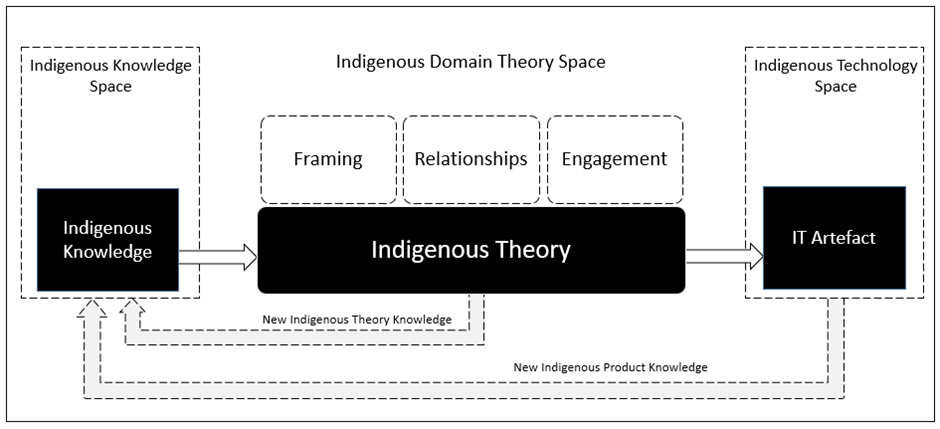Publications
- Chung, A., Shedlock, K., & Corbett, J. (2024). Decolonizing Information Technology Design: A framework for integrating indigenous knowledge in Design Science Research. 2024 Hawaii International Conference on System Sciences. 2024 Hawaii International Conference on System Sciences, Hawaii. Decolonizing Information Technology Design_ A Framework for Integrating.pdf
- Ferreira, J., Young, J., Shedlock, K., Welch, I., Patterson, L., Roberts, H., & Pantidi, N. (2024). Prototyping digital taonga: Considerations for digital representation, interaction and, access. Proceedings of Australian Conference on Computer-Human Interaction, 14. Prototyping Digital Taonga - Considerations for Digital Representation, Interaction, and Access.pdf
- Rawson, Z., Shedlock, K., & Tamasese, D. (2023). Māori perspectives of trust in technology. Australasian Conference on Information Systems, 14. https://aisel.aisnet.org/acis2023/ Maori perspectives of trust in technology.pdf
- Shedlock, K. (2023). A procedure to identify indigenous knowledge holders for constructing a 3d model artefact. Australasian Conference on Information Systems, 1–10. A procedure to identify indigenous knowledge holders for constructing a 3d model artefact.pdf
- Welch, I., & Shedlock, K. (2023). IndigiCloud – Enacting Māori Data Sovereignty. Australasian Conference on Information Systems, 1–6. https://aisel.aisnet.org/acis2023/ ACIS2023-IndigiCliod - Enacting Maori Soverignty proceedings.pdf
- Shedlock, K., & Hudson, P. (2022). Kaupapa Māori concept modelling for the creation of Māori IT Artefacts. Journal of the Royal Society of New Zealand, 1–15. https://doi.org/10.1080/03036758.2022.2070223 Kaupapa Maori concept modelling for the creation of Maori IT Artefacts.pdf
Indigenous Knolwedlge Framework for Organizing a IT Artefact
The TAIHONOHONO Framework is a system design model that reflects the transition of indigenous Maori knowledge as a body of tribal theory that informs the construction of an IT artefact. New tribal theory and product knowledge (IT artefact) recursively feeds back to update existing knowledge as part of the construction cycle (Indigenous Tribal Knowledge Space) generating new tribal knowledge as part of the framework’s design.

This model illustrates the Indigenous Knowledge Space; Indigenous Domain Theory Space; and Indigenous Technology Space for guiding the construction of a digital artefact.
Design Principles
Responsible
| Framing protocols that seek to apply an indigenous purpose to think and act (Shedlock & Vos, 2018). Adheres to the principle of being responsible by framing the correct tribal language implementation techniques of the IT artefact as a taonga. |
|
Reciprocal
| Relationship protocols are trusted to make selected choices (Wilson, 2008). It is based on the principle of reciprocity , where rituals of accountability towards making careful selection choices are based on rapport (trust) when preparing an indigenously organised IT artefact of a taonga. |
|
Respect
| Engaging with protocols that are unique and familiar to the tribal community involved with a IT artefact (Shedlock & Vos, 2018). This involves the principle of respect for engagement activities, adopting protocols that are unique and familiar to the tribal community involved with the IT artefact. |
 This model illustrates the Indigenous Knowledge Space; Indigenous Domain Theory Space; and Indigenous Technology Space for guiding the construction of a digital artefact.
This model illustrates the Indigenous Knowledge Space; Indigenous Domain Theory Space; and Indigenous Technology Space for guiding the construction of a digital artefact.
